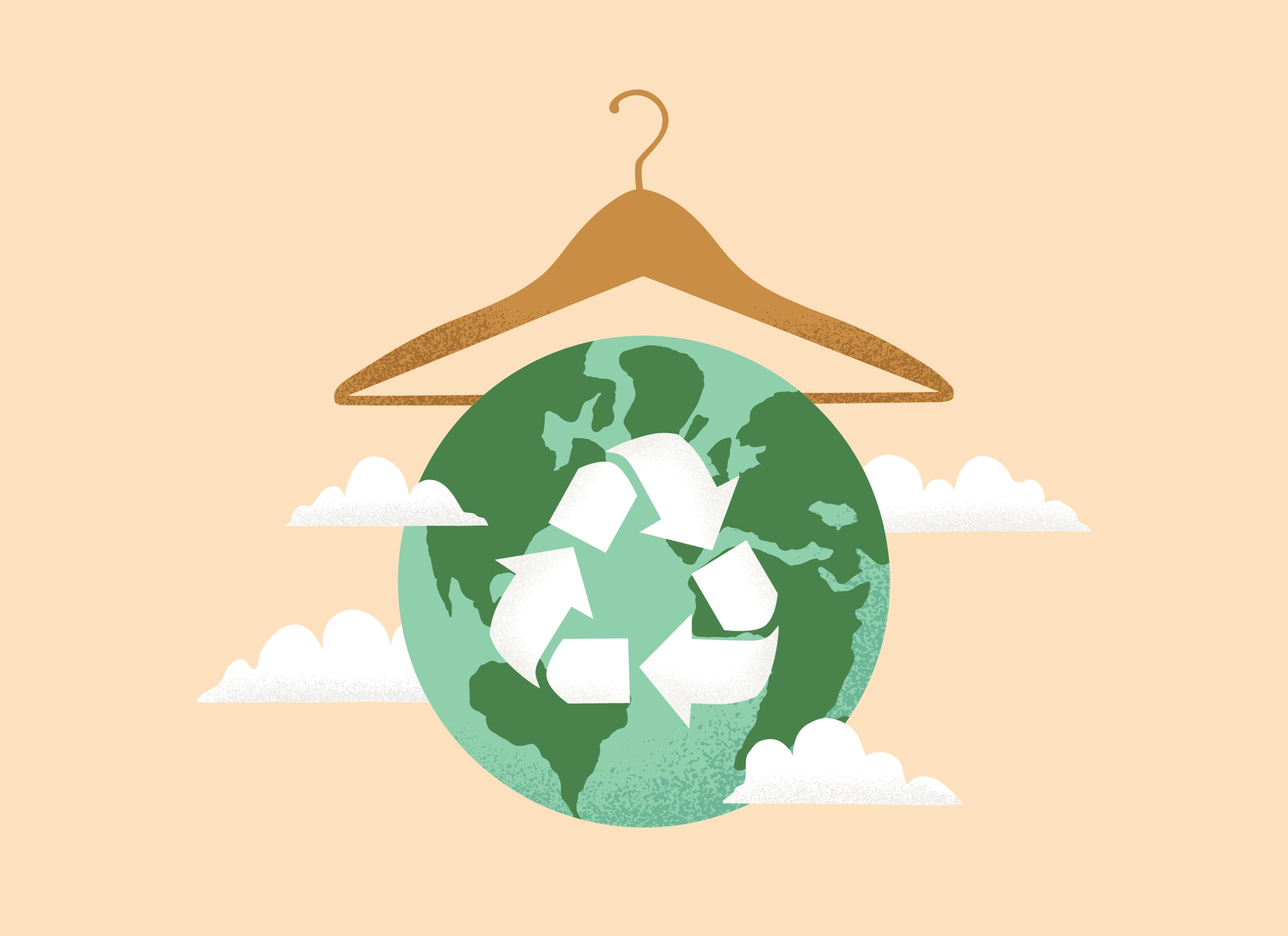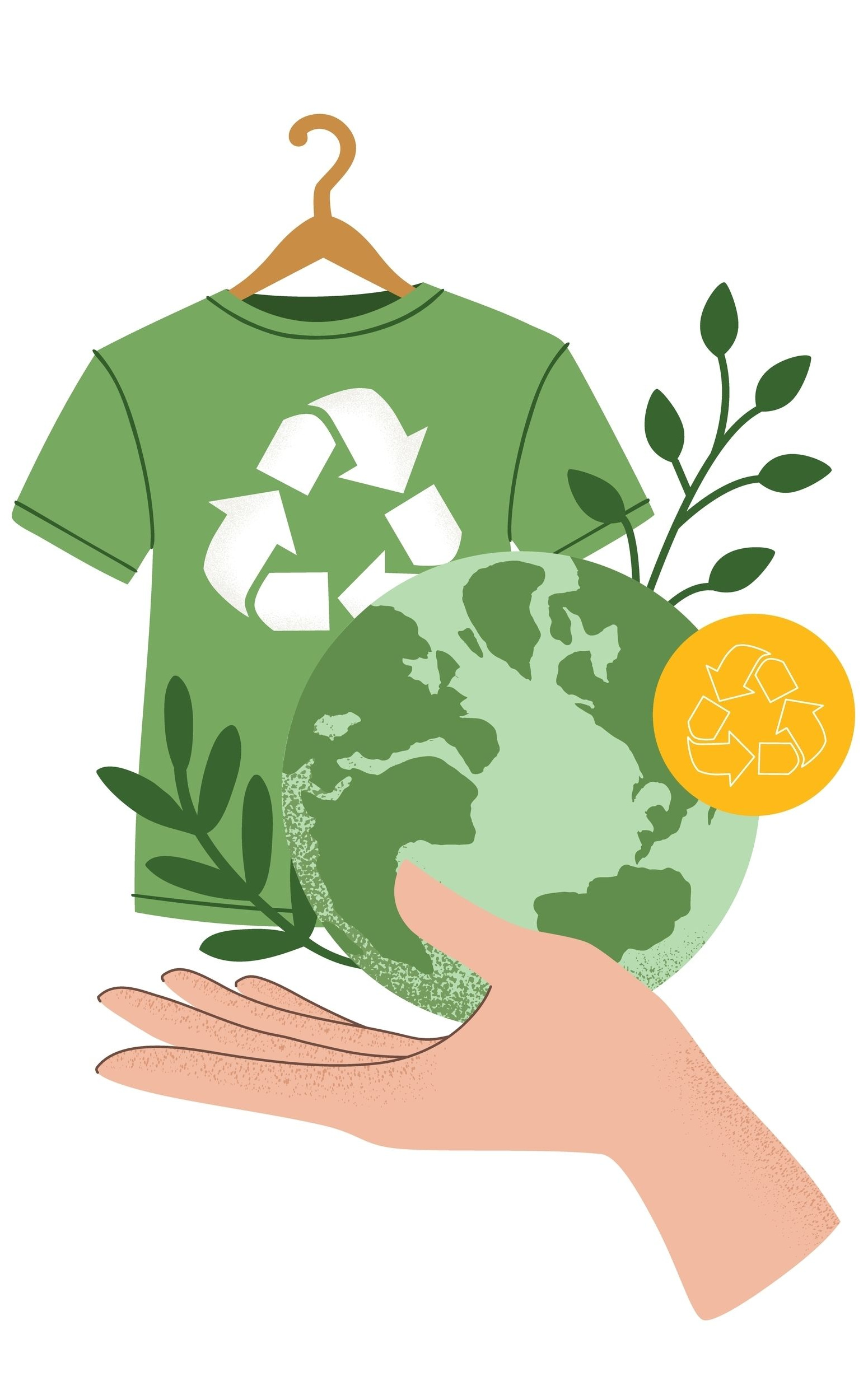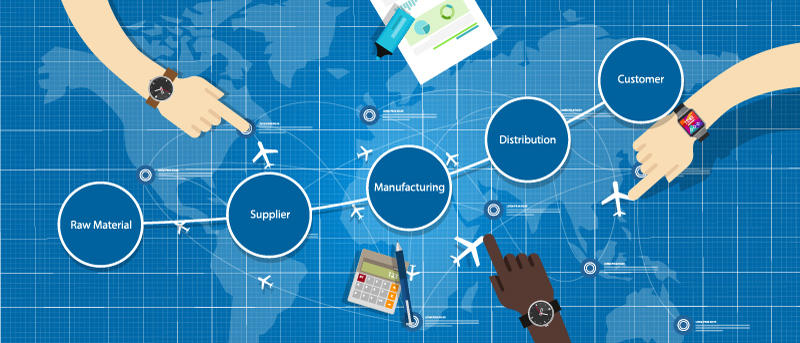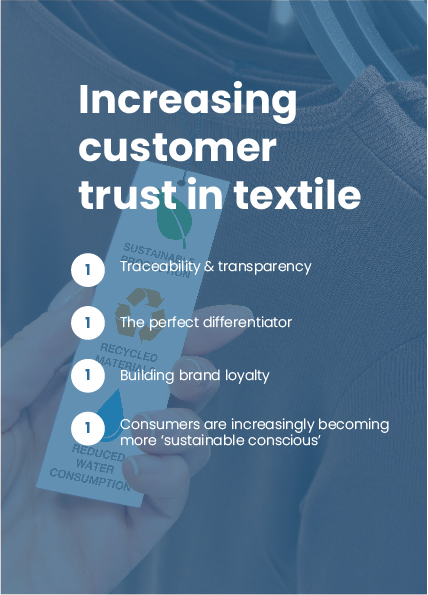In the world of fashion, where trends come and go, and consumers have endless choices, brand trust has become a valuable currency. Shoppers are no longer satisfied with just knowing the style and price of their clothing. They want to understand the story behind the garments they wear. Are they ethically produced? Are they environmentally friendly? Can they trust the brand? In the fast-paced world of fast fashion, building brand trust is more critical than ever.
The Importance of Brand Trust in Fast Fashion
84% of consumers consider the impact of how and where the products they buy are made when making a purchase. Above all other products, they want to know if their fashion choices align with their values; whether that’s supporting sustainable practices, ethical manufacturing, or simply knowing the origin of the products they buy.

The perfect differentiator
In the highly competitive fast fashion industry, brand differentiation is crucial. Unlike the food sector, where consumers can look at nutritional labels, the fast fashion industry lacks in most cases clear branding in terms of ethical and sustainable practices. For instance, it’s often unclear which factories produce the clothes or if malafide production lines are involved in the manufacturing process.
Building Brand Loyalty Through Transparency
94% of consumers are more likely to be loyal to brands that commit to full transparency. This loyalty translates into brand trust, and in the fast fashion industry, trust is a valuable commodity.
Meeting Sustainable Consciousness
73% of consumers are willing to pay more for products that guarantee total transparency. As consumer awareness about sustainability grows, brands that communicate their commitment to sustainability have an advantage. Recent trends indicate that consumers are becoming increasingly “sustainable conscious,” This shift in consumer behaviour presents an opportunity for fast fashion brands to build trust and loyalty.


The Role of Supply Chain Mapping
In the quest to build brand trust, supply chain mapping emerges as a powerful tool. It allows fashion brands to provide consumers with a clear picture of their production process and sourcing practices. Just as in the food industry, where consumers want to know the origin of their food, fashion-conscious consumers want to know the story behind their clothing.
Transparency from Factory to Rack
By implementing supply chain mapping and integrating QR codes on clothing labels, fashion brands can offer consumers the opportunity to trace their garment’s journey. From the resources over the factory floor to the store rack, every step is recorded and visible. This transparency assures consumers that their favourite brand is not part of the fast fashion problem or associated with dubious practices such as child labour or sweatshops.
The Power of Blockchain Technology
To achieve this level of transparency, fast fashion companies can leverage blockchain technology, much like the food industry is doing. Blockchain enables a digital fashion supply chain that ensures full transparency. It gives consumers, retailers, manufacturers, and suppliers confidence and trust in the entire supply chain.
Easy Implementation with Hubwatch
Hubwatch, a dynamic technology provider in supply chain mapping software, offers easy-to-implement complete supply chain mapping software that comes with open source API’s for easy integration. This allows fashion brands to join the system and upload unique product information onto a secure blockchain network. The result is unparalleled visibility into every step of the fashion supply chain.
Ensuring Brand Trust and Business Continuity
With the Hubwatch trace module, both supply chain partners and end consumers can securely trace a product upstream and downstream, accessing vital details about their clothing. All the information about every individual piece of clothing can be shared with the consumer simply by printing a dedicated QR code on the labels.
Additionally, the Certifications module within Hubwatch allows brands to prove their commitment to sustainability and product provenance, further enhancing brand trust in the eyes of consumers.
I am text block. Click edit button to change this text. Lorem ipsum dolor sit amet, consectetur adipiscing elit. Ut elit tellus, luctus nec ullamcorper mattis, pulvinar dapibus leo.


Your supply chain mapping in line with the European Strategy for Sustainable Textiles
The European Commission’s strategy for sustainable textiles focuses on reducing the environmental impact of textile production in the EU and promoting ecological and social sustainability. Some key points in this strategy include:
- Acknowledging Environmental Impact: The strategy recognizes the significant environmental impact of textile consumption, including climate change, water and energy usage, and land utilization in the EU.
- Addressing Fast Fashion: The strategy emphasizes the need to tackle the negative consequences of fast fashion, including overproduction and overconsumption of clothing.
- Ecological Design Mandate: It plans to introduce mandatory ecological design requirements for textile products to ensure sustainable production.
- Waste Reduction: Measures will be implemented to stop the destruction of unsold or returned textile products and promote recycling.
- Microplastic Pollution Control: The strategy aims to control pollution from microplastics originating from synthetic fibers in textiles.
- Transparency and Green Claims: The EU intends to introduce information requirements and digital product passports for textiles to improve transparency and regulate green claims for sustainable textiles.
The goal is to create a more sustainable and transparent textile industry in the EU that minimizes its environmental impact and aligns with consumer expectations for responsible and ethical production.
Accelerating Sustainability in the European Textile Industry by using Hubwatch software
The European Commission’s strategy for sustainable textiles aims to speed up the transition towards a greener and more sustainable textile industry in the EU. Some key aspects of this strategy are:
- Transition Roadmaps: The strategy outlines plans to work with stakeholders in the textile ecosystem to achieve specific goals, such as circularity, digital transformation, and industry resilience.
- Circular Business Models: The EU encourages the adoption of circular business models, like product-as-a-service and repair services, to reduce overproduction and overconsumption of clothing.
- Supporting Social Enterprises: The strategy promotes social enterprises focused on textile reuse and repair, creating local, sustainable businesses and job opportunities.
- Financial Incentives: Tax measures and financing options will support the adoption of circular business models in the textile sector.
- Research and Innovation: The strategy emphasizes investment in textile research, innovation, and technology to drive industry progress, including public-private partnerships.
- Skills Development: Developing skills for green and digital transitions in the textile sector is a priority.
- Global Collaboration: The European Commission will address the export of textile waste and work on enhancing global textile trade transparency and sustainability.
This comprehensive strategy seeks to establish a more sustainable textile industry in the EU that meets both environmental and consumer expectations while fostering innovation and resilience in the sector.
In the fashion industry, brand trust is the key to success. Supply chain mapping, powered by blockchain technology, offers a path to building that trust. As consumers’ needs evolve, it’s essential for fast fashion brands to embrace transparency, showcase their ethical practices, and lead the way towards a more sustainable and trustworthy future. Trust is the foundation of any brand, and in the fashion world, it’s more significant than ever before.



